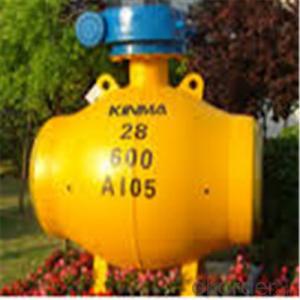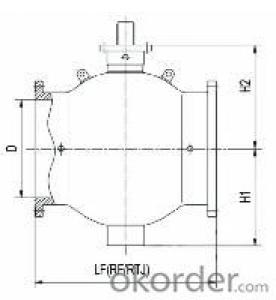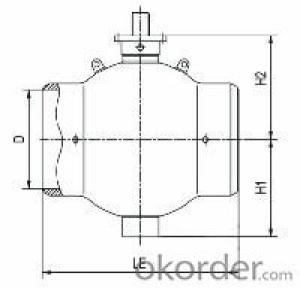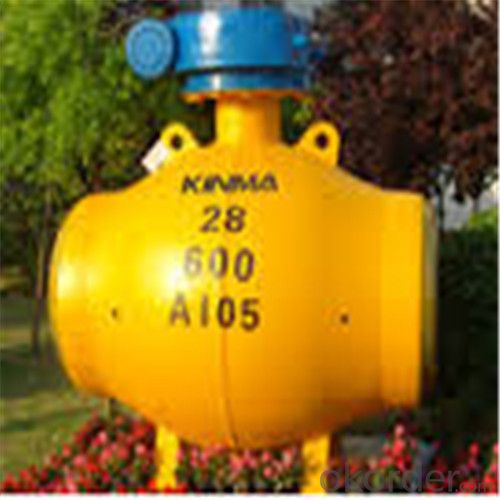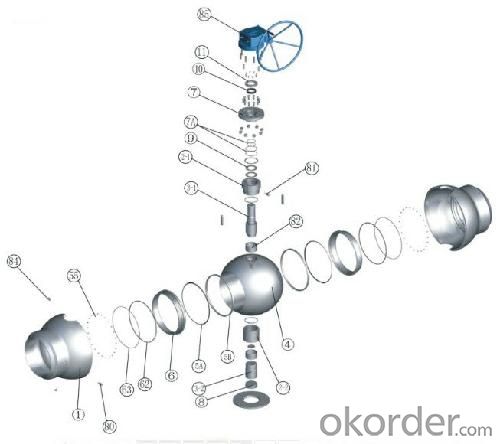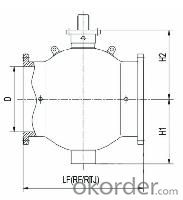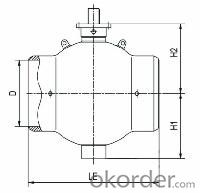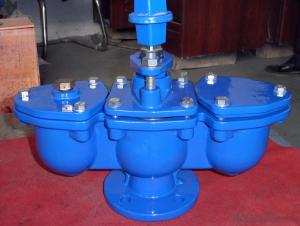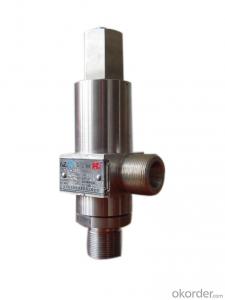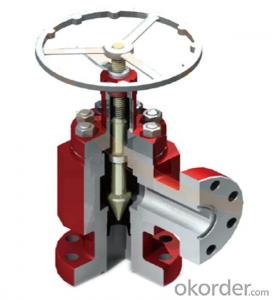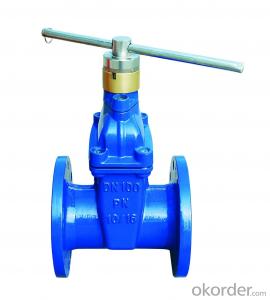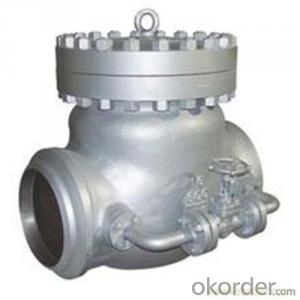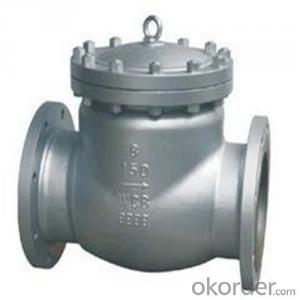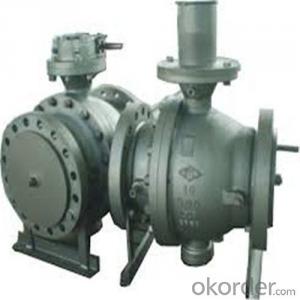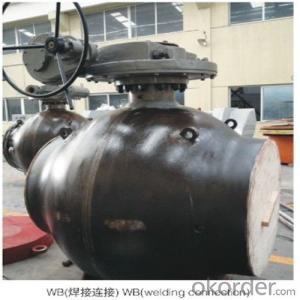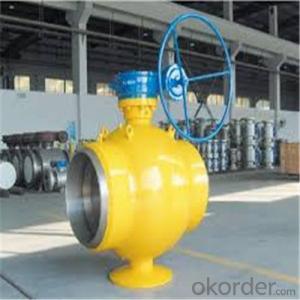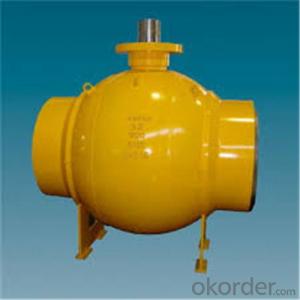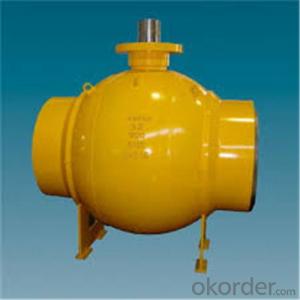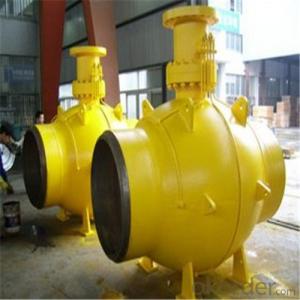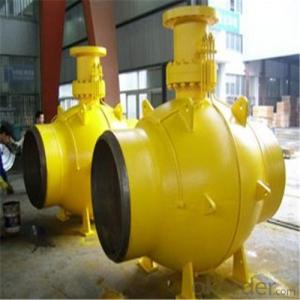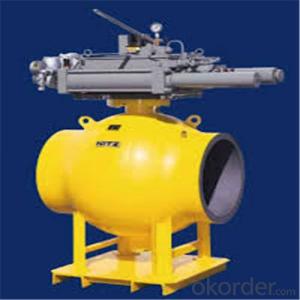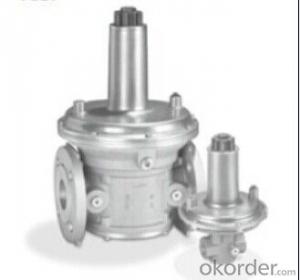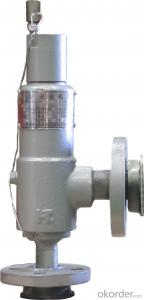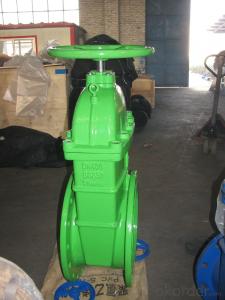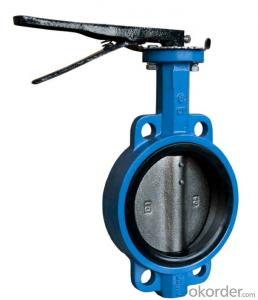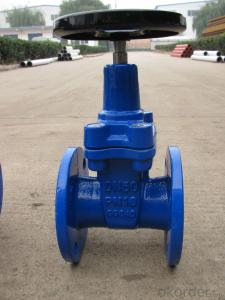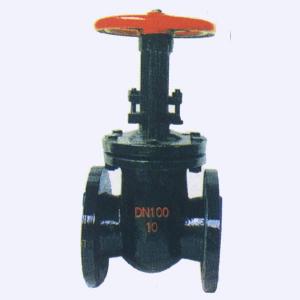Full Welded Forged Steel Ball Valve DN 40 inch
- Loading Port:
- Shanghai
- Payment Terms:
- TT OR LC
- Min Order Qty:
- 10 pc
- Supply Capability:
- 100 pc/month
OKorder Service Pledge
OKorder Financial Service
You Might Also Like
Design Features of full welded forged steel ball valve
The body of ball valve is full welded,selects high quality forged material,and adopts the advanced forged forming technology to form two semi-spheres which are welded into a whole in the middle of the body.This welding technology differentiates the ball valve form others,and makes the valve more spherically,so the valve structure is more compacter,lighter and stronger.Besides,the middle direct welding realize highly accurate valve body manufacturing,makes fully and completely sealing between the seat and ball.The full welding instead of bolts completely avoids the outside leakage,so ball valve is the ideal product for under-ground,offshore working platform and under-sea equipments.
Adopting fixed plates or trunnion to support the ball
The top and bottom of the ball is supported by upper and lower fixed plates or stem and trunnion,and the ball is accurately placed in the center of the ball valve to achieve complete seals and precise movements.When plate adopted,the force exerted by the medium to the ball is distributed via the plate to the left and right bodies,so that the stem does not bear the blending moment from the medium,but only the torque from the ball rotation during the opening/closing of the valve.The low-friction PTFE Teflon composite bearings installed between the ball axis and fixed plate and between the stem and the trunnion can absorb ball moving action caused by the pressure of the medium.This structure brings stable actions and easy operations for the ball valves,and the required operation torque can be reduced,so smaller actuators can be used,and the cost is cut down.
ball valve seat is floating structure,means the seat can move along the medium direction,so that the seat can fit against the ball all the time.
(Ⅰ)Double piston effect structure seat of full welded forged steel ball valve
Seat design is special double pistons effect structure,it can ensure the seal wherever the medium flows into the ball valve.

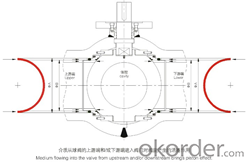
(Ⅱ)Seat multistage seal strucute of full welded forged steel ball valve
As following graphic instruction,on seat bearing ring,set two soft sealing rings(A and B)and metal sealing spherical surface which can seal with the ball.Seat ring A is spring loaded,which seals the surface with the ball tightly to the surface to form an initial seat;When there is pressure generated from medium,the piston force is generated to make seal ring A elastically deformed and seal ring B fit the surface of the ball surface due to the piston effect caused by area difference,thus the second seal forms.When the medium pressure is rising.It will generate huge pressure to seal ring A and seal ring B,so the two seals have a greater elastic deformation,then metal seal ball surface compact with ball surface to form the third level of metal to metal seal.
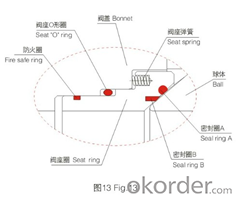
(Ⅲ)Secondary seat seal device of full welded forged steel ball valve
As the above graphic instruction,the secondary seal device(seat grease injection valve)can be chosen according to the actual working condition,medium requirement,seal requirement,etc.Seat ring grease injection valve is a one-way valve,installed on the body,which can prevent the leakage and inject grease under the outside force.When secondary seal is required,there is a grease injecting channel and hole on the seat ring.The grease can form a seal between the seat and the ball,and then stop the leakage.
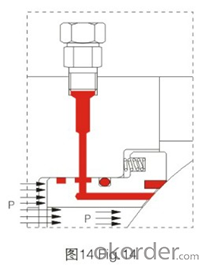
Standards Applied of full welded forged steel ball valve:
Design Standard | API 6D customize |
Connection Standard | ASME B 16.25-2007 ASME B 16.5 ASME B 31.4 ASME B 31.8 DIN GB、GB/T JB、JB/T JIS customize |
Test Standard | API 6D customize |
Face to Face | API 6D customize |
Pressure-teperature rating | ASME B 16.34-2004 customize |
Marking | MSS SP-25 customize |
FAQ of full welded forged steel ball valve:
Q1:I can’t find the type of steel check valve which I need. what can I do?
The chart above only lists out some common composition of steel check valve parts.We may provide other different parts material composition according to the customer's request or the actual valve working condition.
Q2:Which certification do your products pass?
Our products are in accordance with ISO 9001、ISO 14001、API 6A、API 6D、TS CE、API607/6FA/BS6755.
Q3:How can I place an order?
The only one thing you should do is to tell us the sepecification about type 、quantity and mode of transportation, then we will send you quotation within 24 hours.
- Q: where is the bleed valve in a 97 taurus????thank you
- Which okorder put in your car facts and go to repair
- Q: What is the function of valves between atrium and ventricle in the heart?thanks
- the atrioventricular valves (AV valves) separates the atria from the ventricles. the AV valves perform a very important function in the heart by maintaining the blood flow in one direction. they are subjected to tremendous strain during every heart beat, and are uniquely designed to withstand this strain through a person’s lifetime. the right AV valves is called the tricuspid valve. the left AV valve is called the mitral valve. the opening and closing of the AV valves is dependent on pressure differences between the atria and ventricles. when the ventricles relax, atrial pressure exceeds ventricular pressure, the AV valves are pushed open and blood flows into the ventricles. however, when the ventricles contract, ventricular pressure exceeds atrial pressure causing the AV valves to snap shut. :)
- Q: i have a 1997 dodge avenger ES with a 2.5L v6. im wondering if my EGR Valve could be bad i get about 14mpg on gas. my car has a poor idle but will not stall idle gets kinda bad if the airconditing is on. I did a complete tune up and yes it was done right. and i changed my Idle air control valve. after i changed the valve i drove a few miles and i got a check engine light for insuffecient EGR flow but then it went away and never came back. I took the valve off and cleaned it with carb cleaner. im trying to find out why my ide is kinda poor and if the car sits a few days it takes a little longer to start.my motor has 142k miles but has been properly maintained.
- you should be getting way more than that on gas mileage at least on the road anyway,a bad egr valve will cost you around 3-5 miles per gallon if its leaking and doesn't seal of when it should, i went through this with out stratus ands its 2.4.it got real bad mileage,cleaning the valve didn't help it none at all, i went to a salvage yard and got a used one off a blown engine to try it to see if that would help it and the mileage came back up on it so i replaced it with a new one,you should average about 15-17 in town with that one and around 21 or better on the highway if its running right,id try that if everything else is right and you have double checked for codes and don't get any but the egr valve you don't have anything too loose,if you have had it scanned and dont come up with any other codes it would about have to be that or really low compression on the engine causing that too happen,a weak fuel pump believe it or not will cause one to get really bad mileage and run and idle bad also,and this is often over looked as a possibility,check those things if its not them we,ll figure out whats causing it,good luck.
- Q: I have a 3-circuit sprinkler system in my yard (built by me, last year). I discovered this week that I overtightened the connection between the valves and the downstream pipes, and 2 of the three valves are cracked, and leaking, at the connection. I replaced all 3 valves, and now I need to reconnect them to the supply. But this means I'm working backward - when I bult the system last year, I worked downstream - I built the manifold first, connected the valves, then the remainder of each branch. Now, I have to make the new manifold fit the valves, and naturally, they don't line up perfectly. Any tips/tricks on connecting valves in this situation? Is there such a thing as flexible pipe that can withstand continuous pressure? I'm using unions at both ends of each valve to help things go together/come apart more easily.
- valve manifolds are something that requires practice and experience. i used to struggle with them at work until i did a good bit of them. 3 zones is not that many valves so it shouldnt be too difficult. if they wont line up exactly right, i would recommend adding longer peices of pipe to the mainline side of the vavles and re routing the supply line futher back and you will have more room to flex the pipe and vavles into the Tees and 90s. do not use any form of flexible pipe on any mainline. you will regret it. lol the bigger the hole you dig will give you the most room and the more pipe, and room will give you more flexability to build the manifold. it is easier to connect the valves the way you did it first though, but you can do it either way. good luck and hope this helps
- Q: Hello, I went to my garage last friday because my exhaust emmisions light was on, on my Bora MK4 2003 52 plate 1.6 16V. They said its a faulty EGR valve which could be from being clogged up with sh*t. But they said it would be fine to drive, and that the rough idle wouldn't harm the car, and to unplug it if the rough idle became annoying. Its now sunday 3 days since the garage diagnosed it I drove about 250 miles over these days. With the exhaust emissions light coming on then sometimes going off. I think the EGR Valve keeps sticking closed and the engine is very hard to start. Is there anything I can do to help start the car? which is better having it plugged in or unplugged? how do you take the EGR Valve out and clean it what tools are needed is it complicated. any ideas on how I can help it start ? I've tried unplugging it, it makes no difference really.
- EGR stands for Exhaust Gas Recirculation, and is not really good for a car. It causes deposits on the back of the valves, and ruins the valve guides. If the EGR sticks, it also won't let the engine start or have maximum power. Unplugging it, and plugging up the vacuum hose, will prevent it from opening if it is closed, but will not close it if stuck open already. What you need to do then is to remove and clean it will chemicals or wire brush, until if closes again. You can also plug it off with a plate underneath it. The only time you ever need EGR is if you have a high compression engine that would have pre-ignition without the EGR being used to poison the mixture and prevent pre-ignition. But if you run premium gas, then you should not need an EGR at all, and you should consider removing and plugging it.
- Q: Ok, so I was just wondering, do you have to have a turbo to get blow-off valves? Also, do you have to have a manual? And are there any other requirements?
- A blow off valve releases the excess pressure from your forced induction system when you close the throttle plate. It prevents turbo surge. If you install one on your naturally aspirated vehicle, all it will do is get you laughed at. As for the manual, READ IT! Blow off valves have nothing to do with the transmission, so automatic or manual, makes no difference. Word of advise: Don't work on or modify your car. You'll make it slower at the very least.
- Q: I have a 98 Mitsubishi Mirage, seems there is a valve cover oil leak, i know this can be easily fixed by replacing the gasket.. but how will i know if the leak isn't from the valve cover gasket . Is the cylinder head gasket a major issue also .. if its not really the valve cover thats producing the oil leak should i not worry and just replace the valve cover gasket .?
- Sounds like you should clean your engine, then take a look to see where the leak is. Have you tried tightening the valve cover bolts?.
- Q: she 13 and shes always sleeping what is a leaky valve there not telling me enough for me to understand and im a nurse tech im scared for her
- Leaky valve is generally refered to as back flow in mitral valve of the heart resulting into extreme debilitation and shortness of breath.Each heart beat sends blood leaking backwards through mitral valve making the heart work harder and harder to keep the blood circulating.No medication is available to treat or cure this condition.To correct the situation answer is either a mitral valve clip procedure or open heart surgery.
- Q: i know its going to drop some oil, im just wondering to what extent? how much oil is going to spill out?
- your crazy right ? your working on a car, removing the valve cover and you don't want to be covered with oil ? Well go out and buy some rubber gloves first. please keep in mind paint wont' stick to anything unless it is cleaned properly. So to paint a valve cover and have the paint actually stick you need to remove it completely and clean it thoroughly with solvent. once it has been painted you need a good high heat paint and primer. I just painted the headers on my bike, after de-rusting it and removing the original paint, then I applied to coats of high heat primer, then two coats of paint.
- Q: One day i was cleaning my trumpet's third valve. when i tried pressing the key it was goig inok but near the end it gets stuck and gets unstuck like a second later.how can i fix this problem with out spending too much money?
- That sounds like a ping in the valve casing which, if let go , can ruin the valve. It's a repairshop item maybe $100
Send your message to us
Full Welded Forged Steel Ball Valve DN 40 inch
- Loading Port:
- Shanghai
- Payment Terms:
- TT OR LC
- Min Order Qty:
- 10 pc
- Supply Capability:
- 100 pc/month
OKorder Service Pledge
OKorder Financial Service
Similar products
Hot products
Hot Searches
Related keywords
